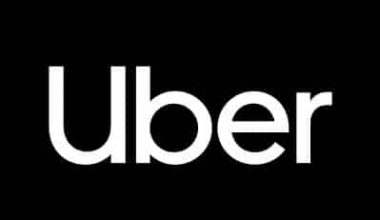We understand that the e-commerce industry’s fierce competition forces you to compete on price. However, some customers do not look for low rates. Instead, they seek exclusivity. The premium pricing (prestige pricing) strategy is ideal for e-commerce vendors who want to build a high-end company with a strong brand identity. Read to learn more about premium pricing with examples.
Premium pricing is the practice of pricing the products or services at a higher level to give the impression of a high-quality product. Furthermore, It is also known as prestige or image pricing.
Customers, according to the theory, will pay higher prices for the correct picture and will not examine whether the price accurately represents the value. In Nike’s case, the company expresses value rather than the basic existence of the product.
Premium pricing has the potential to provide businesses with a psychological marketing advantage. It does so by convincing consumers that there is an added value for the cost. It capitalizes on the buyer’s perception that one brand’s product is of better quality than rivals because it costs more.
There are many examples of companies and brands leveraging their goods by premium pricing. Luxury car manufacturers are infamous for raising prices on high-end cars. A Toyota Camry or a Honda Civic can get you from point A to point B just as well as a Bentley or a BMW. However, consumers who enjoy driving around in expensive cars are unlikely to tolerate driving an entry-level sedan as their primary mode of transportation.
A Rolex watch can cost well over ten grand depending on the amount of bling embedded. However, a Timex watch with twice as many features can be purchased for around $28 or less. They both say time, but it is clear that the Rolex is a status symbol that appeals to their clients. This is because it displays their financial performance as well as the correct time. The value is in the brand, not the functionality of the product. You can’t blame companies for charging exorbitant rates to reinforce the perceived value they provide to their consumers.
Read Also: Prestige Pricing: Overview, Examples, Strategy (+ Free Tips)
Don’t worry, I know most of you aren’t in the business of marketing or selling hot kicks. Premium pricing is used by companies of all sizes to cater to consumers’ sense of worth and maximize income. You don’t have to be the owner of an iconic brand to use this premium pricing strategy successfully. There are several effective ways to use high prices as a guide to more realistic sales and as a means of communicating value. Let’s take a look at some of the techniques.
#1. Create an enterprise-level (whether you have an enterprise product or not)
One way to use premium pricing in your company is to build an expensive enterprise tier on your pricing page. Eric has previously addressed the premium pricing strategy. This is an efficient way to improve the perceived value of your offering as well as your revenue stream.
For an example of a premium pricing strategy, if you sell a SaaS product for $50 per month, you can build an enterprise tier for $300 per month that includes a few extra features such as more storage or unlimited users. The enterprise tier will be out of reach for the majority of your prospective customers. However, it will act as a guidepost to the $50 product.
Just keep in mind to have the right features in the target product so that it is a good buy for both your customers and your business. In this scenario, the business tier exists to reassure consumers that the $50 tier is a better deal. It does not have any superior functionality that the prospects would be drawn to but unable to afford.
#2. Develop a respectable image for your business (and the right environment)
Creating a prestigious picture for your business from the ground up is a critical factor in reinforcing higher prices. If you can boost the consumer experience by creating the right atmosphere and providing reliable, excellent service, your business can project an image that demonstrates your product is a better value at a higher price than your rivals.
#3. Give your price the appropriate picture.
The physical presence of your published prices may have an unconscious impact on your future buyers, increasing sales. Smaller details, such as ending your prices in 0s or 5s and avoiding decimal pricing, can sometimes justify a higher price by presenting a higher-quality image.
This form of psychological pricing tactic is common in high-end restaurants. You’re unlikely to see a price like “8.99” for a meal unless you’re in a chain or franchise establishment. Prices ending in 9 are intended to persuade customers that they are getting a good deal. But prices consisting of round numbers (no cents, no decimals) can subtly convince customers that your company is trustworthy and your product is sophisticated. In other words, the high price they pay is justified.
The design of your pricing page will also help you project the right picture of your prices and increase perceived value. Survey Monkey, which provides a robust software survey tool, is a good example of this premium pricing strategy.
Their pricing page promotes the $25 per month Gold tier as the most common. They use color differentiation and a slightly larger pricing bracket to emphasize this. The Select tier below it includes all but one of the Gold tier’s features, but it costs $8 less per month, at $17.
Customers are drawn to the more expensive Gold edition despite the lack of feature differentiation because it appears to be the better choice. The perceived value of the Gold bracket is increased further by a $65 per month option placed to its right. The option acts as a price anchor. Most customers are likely to be happy with the Select choice, but the main design elements and the price anchor help SurveyMonkey convince customers to choose Gold.
The Benefits
#1. High-Profit Yield
Naturally, increasing the price of a commodity would result in higher profit margins. Even though fewer people can afford iPhones than Xiaomi phones, Apple’s mobile profits are four times greater than Samsung’s. That is, you can make more money with fewer people.
The value of a brand and the premium pricing are inextricably linked. While a high brand value helps a brand to introduce premium pricing, prestige prices, in turn, increase a brand’s value.
#2. Promotes Products And Company Image
Generally, such products are considered highly effective and create a feeling of quality. and this boosts the company’s image.
Read Also: PSYCHOLOGICAL PRICING: Effective Practices for Every Business
The disadvantages of premium pricing include the following;
#1. High Cost Of Advertisement
Remember, as a premium brand, you must make it seem as if your products are of high quality, which means selling your products in the same way. Nike and Adidas will spend millions of dollars on marketing and advertisement next year. But the thing is, it works.
#2. Problem Of Unique Selling Point
The product value proposition and unique selling point must at least meet up with the people’s expectations else, you face the threat of losing your customers. Although this strategy involves an inelastic product, failure to keep your unique selling point abreast will lead to being out of business.
#3. Limits Target Market
Premium pricing strategies limit the size of your target audience. Generally, a vast number of a product’s target users are people in the middle class in society, and premium pricing automatically keeps them at arm’s length.
What are some examples of successful premium pricing strategies?
Examples of successful premium pricing strategies include Apple’s premium pricing for its high-end smartphones, luxury fashion brands such as Chanel and Louis Vuitton charging premium prices for their products, and hotel chains such as the Ritz Carlton and Four Seasons charging premium prices for their luxury accommodations.
What are the legal considerations for premium pricing?
In some countries, there are laws against price fixing, which restricts companies from colluding on prices. It is important for companies to comply with these laws and ensure that their premium pricing strategies are fair and not anti-competitive.
How to set prices for new premium products?
When setting prices for new premium products, consider the target market, production costs, and the prices of similar premium products. Analyze competitors’ premium pricing strategies, and use market research to gauge customer willingness to pay.
How to maintain premium pricing while ensuring quality?
To maintain premium pricing while ensuring quality, companies need to consistently deliver high-quality products and exceptional customer service. This helps justify the premium price and maintain customer trust in the brand.
How to deal with premium pricing challenges?
Premium pricing challenges include competition, changing customer needs, and maintaining product quality. Companies can address these challenges by continually improving their products, marketing effectively, and adjusting premium prices as needed.
How to use data and technology to support premium pricing?
Data and technology can be used to gather information on competitor prices, market trends, and customer behavior. This information can help inform premium pricing decisions and ensure that premium prices remain competitive.
Conclusion
Premium pricing strategies aren’t limited to the major brands, but that doesn’t mean you can raise the prices. We’ve said it before and we’ll say it again: a 1% rise in price increases income by an average of 11%. Choose a price that reinforces the quality of the service to the appropriate audience and concentrate on increasing the value of your product. If you can effectively convey value, you can create your brand, minimize turnover, and keep customers coming back.
The keys to retaining both integrity and higher margins are the same: consistency and avoiding bottom-line discounts. The software industry is not the place to cut prices to make fast conversions; doing so would result in an undervalued product and weak future sales.
Build confidence and customer relationships by offering competitive rates that represent the work you’ve put into the company, and you’ll quickly outperform the competition.
What is premium pricing example?
Premium Pricing Examples
If all you want is a watch to tell time, you can buy a Timex for $28The Timex may even have more bells and whistles than the Rolex, but consumers are willing to pay $10,000 for the Rolex because they perceive the product to be extremely high quality, and it is an ultimate status symbol.
How do you price a premium?
To calculate the price premium using the average price paid benchmark, managers can also divide a brand’s share of the market in value terms by its share in volume terms. If value and volume market shares are equal, there is no premium.
What are the types of price?
The following are common types of prices.
- Psychological Prices. A price based on numerical cognition. …
- Customary Price. A customary price is a historically common price that remains in place for an extended period of time. …
- Price Points. …
- Line Pricing. …
- Bundle & Bulk. …
- Variable Pricing. …
- Recurring Price. …
- Metered Service.
What is premium in pricing strategy?
Premium pricing is a markup on the original market price of an item used to create an illusion of higher quality.
Related Articles
- Competitive Pricing: How to do Competitive Pricing Analysis
- Prestige Pricing: Overview, Examples, Strategy (+ Free Tips)
- PENETRATION PRICING POLICY: HOW YOU CAN GAIN MARKET ENTRY
- MARKET GROWTH: Definition, Calculations, Rates, Strategies (Simplified)
- MARKET RISKS: Best Practices and Easy Guide with Examples







